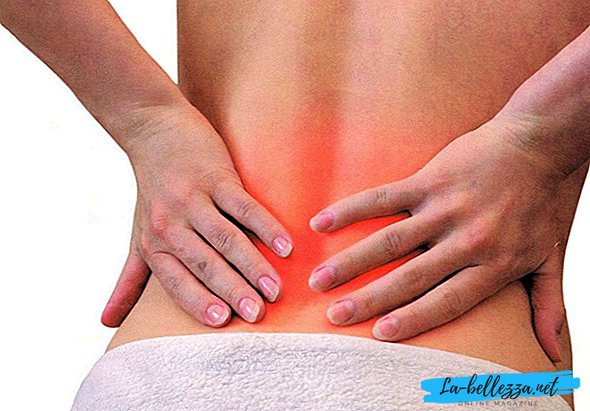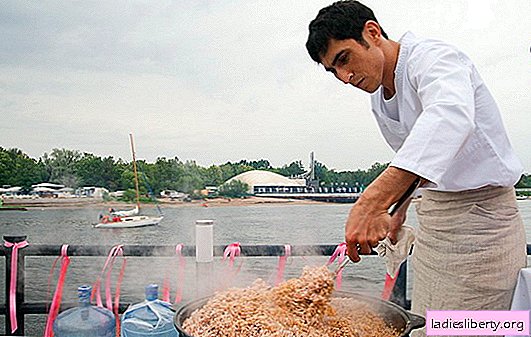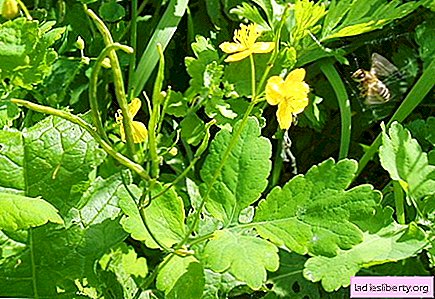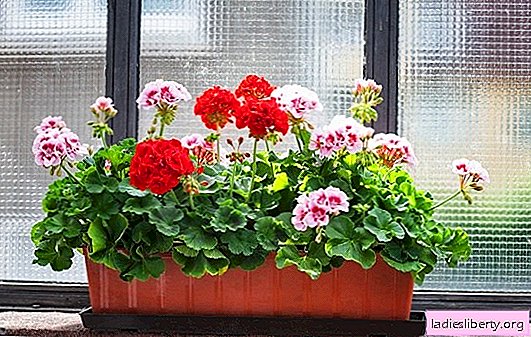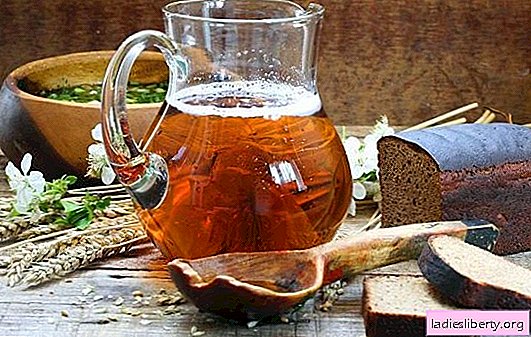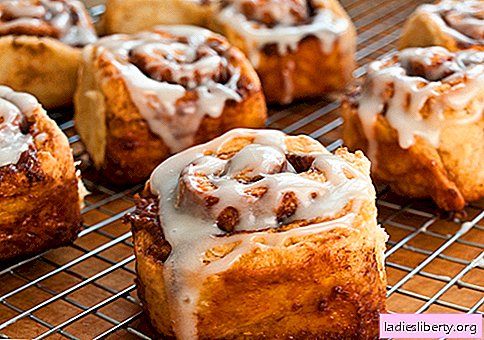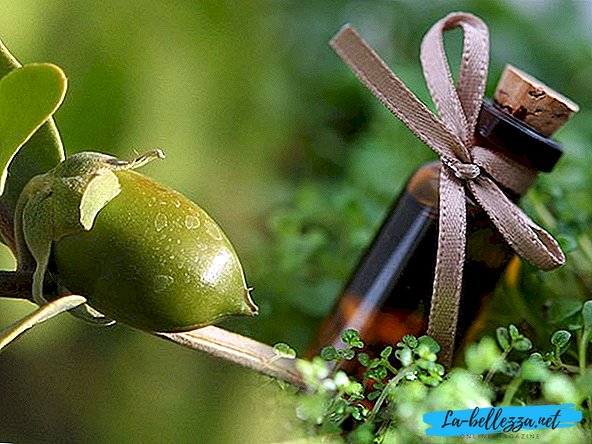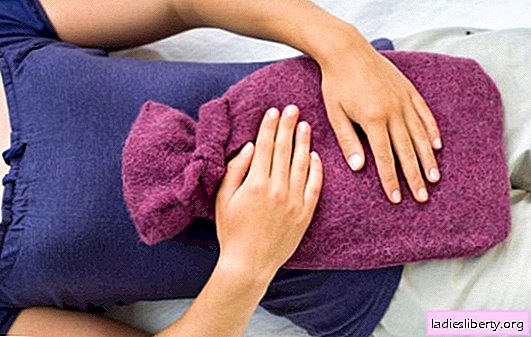
Cystitis - an inflammatory disease of the bladder. It is observed in different age categories, but is more common in older women.
This is due to the anatomical and physiological characteristics of the female body. The disease can be chronic. In the treatment of cystitis, along with specific drugs, a special role is given to dietary nutrition.
General dietary guidelines for cystitis
The main objective of the diet for cystitis is to alleviate the symptoms of the disease and accelerate the healing process. The basic principles of nutrition in this disease will help to solve this problem:
• Proper distribution of foods in the diet. For breakfast and lunch, you can pick up enough high-calorie foods. Calorie dinner should be small. This principle has a scientific basis. The bladder and kidneys are anatomically and physiologically closely related. Their functions are activated in the morning and afternoon. Therefore, you should not overload them in the evening, and even more at night when these organs are in the relaxation phase;
• The correct drinking regimen. The amount of fluid you drink per day should be quite large. Moreover, it can be not only pure drinking water, but also juices, fruit drinks, compotes, herbal teas. The use of large amounts of fluid contributes to the leaching of infection from the walls of the bladder and promotes faster recovery
• Selection of products that do not cause irritation of the walls of the bladder. Certain foods can cause exacerbation of cystitis. Therefore, it is important to know which foods can be used in the diet and which ones you should refrain from;
• Regular bowel movements. In some cases, constipation can cause bladder intoxication and cystitis. In order to avoid constipation, it is necessary to include foods with a high fiber content in the diet: cabbage, carrots, dried fruits, dishes made from cereals. With a tendency to constipation, it is necessary to take prune infusion for the night;
• Transition to low-salt and salt-free nutrition;
• Selection of foods low in protein, fat and sugar;
• Selection of methods for processing products that exclude frying, salting, canning.
What to include and what to exclude from a diet for cystitis?
Since one of the main objectives of the diet for cystitis is to prevent irritation of the inflamed mucosa of the bladder wall, it is necessary to exclude from the diet:
• Smoked meats, pickles, spicy foods, foods that have been processed by roasting, canning, pickling;
• Black tea, instant coffee and grain, carbonated drinks;
• Sugar, saccharin and products containing them;
• Spicy vegetables (bell pepper and chili, radish and radish), green (sorrel, parsley), and spices (black pepper, bay leaf, coriander), etc .;
• Butter baking, pasta, confectionery, high in fat, sugar and preservatives;
• Alcohol and beer;
• Cocoa and chocolate;
• Dairy products, high in fat, cheeses, yogurts;
• Citrus, and their juices;
• Tomatoes and products based on them;
• Vinegar-based dressings, mayonnaise;
• All kinds of nuts, bananas, apples of sour varieties, plums, cherries, peaches, avocados;
• Fatty meat, fish, animal and vegetable fats;
• All products that include GMOs.
What is allowed in diet with cystitis?
When choosing products, the patient should be guided by the recommendations of nutritionists.
Here is just a small list of products that they It is advised to include in the diet for cystitis:
• Vegetables with diuretic properties. For example, pumpkin, cucumbers, zucchini, celery;
• Sweet varieties of fruits - apples, grapes, pears.
• Pomegranate fruits are also recommended for patients with cystitis, since they have an antimicrobial effect, which is very useful in this disease;
• Watermelons with a strong diuretic effect;
• Forest gifts - cranberries, lingonberries, cloudberries, blueberries with diuretic and antimicrobial properties;
• Coarse bread, bran, whole-grain cereal;
• Fermented baked milk, kefir and yogurt with a small percentage of fat content;
• Unsalted varieties of hard and soft cheeses;
• Meat and fish fillet of low-fat varieties;
• Vegetable broths and soups;
• Olive oil (1 tablespoon per day
• Cedar seeds - 25 g per day;
• 1-2 eggs in a few days;
• Sometimes you can use honey, not more than 1 teaspoon per day;
There should not be restrictions in drinking. You can drink berry fruit drinks without added sugar, fruit compotes, herbal infusions and teas, infusions from the kidneys, freshly squeezed juices, still carbonated mineral water (calcium chloride).
A special place in the diet for cystitis is taken by vitamins. You can get vitamins from fresh leaves, berries and fruits at home. Fine vitamin tea is obtained from rosehip berries, mountain ash, blackcurrant, sea buckthorn, taken in equal parts. Strawberry leaves are added to them, and all components are brewed in a thermos. This tea should be infused for 2-3 hours. Take an infusion of half a glass 30 minutes before eating. The course is 1-2 months.
General recommendations for the preparation of a diet menu for cystitis
Given the recommendations of nutritionists, you can make an approximate menu for every day. Contrary to the generally accepted belief that the diet for cystitis is uniform, it can be expanded through methods of preparation and combination of products.
• Breakfast for many associated with cereals. In addition to cereals made from whole grain cereals, you can cook steamed vegetables and vegetable purees. Once a week you can make an omelet. Also not bad for breakfast to take low-fat cottage cheese with yogurt and fresh fruits and berries. Unsalted cheese is good for a sandwich. From drinking, you can use green or herbal tea, freshly prepared juices from vegetables or fruits, fruit drinks;
• Dinner consists of three dishes. At first, fit vegetable soups and borscht, beetroot soup, soup-grains. Second courses - steamed meatballs and meatballs, steamed poultry or veal meat, boiled low-fat fish. As a side dish, stewed vegetables, mashed potatoes, cereals are perfect. In addition to fresh fruits and berries for dessert, you can cook many delicious and different in composition dishes: berry jelly, baked apples and pears, smoothies from berries, fruit and berry cocktails, curd soufflé with berries and fruits, mousses, jelly, juices, fruit drinks, berry and herbal teas; Snack - kefir, ryazhenka with bread;
• Dinner - cottage cheese or rice casseroles, pancakes made from buckwheat or rye flour, vinaigrette, salads from fresh cucumbers, freshly squeezed juices, herbal tea.
Approximate weekly menu for cystitis
• First day.
Breakfast: buckwheat porridge, 150 grams of low-fat cottage cheese with slices of plums or apples, a glass of freshly squeezed apple juice.
Second breakfast: a cup of lingonberry jelly (possible with rye bread).
Lunch: vegetable puree soup, 150 grams of boiled chicken, a glass of rosehip infusion.
Snack: fermented baked milk.
Dinner: fruit salad of apple, pear, kiwi, a glass of kefir.
• Second day.
Breakfast: oatmeal with fresh apple, or cranberries, a cup of herbal tea.
Second breakfast: apple juice.
Lunch: okroshka (without fatty meat, sausages, sour cream, vinegar), baked potatoes, a cup of cranberry jelly.
Lunch: kefir or ryazhenka.
Dinner: scrambled eggs from one egg with greens, rye bread, carrot juice.
• The third day.
Breakfast: granola with kefir, a glass of berry vitamin infusion from a thermos.
Second breakfast: pear or apple, a glass of herbal tea.
Lunch: oat soup with croutons, 100 grams of boiled veal, dried fruit compote.
Snack: a glass of cranberry jelly with bread.
Dinner: baked potatoes, 200 grams of boiled low-fat fish (cod, sea bass, pollock), a glass of kefir.
• Fourth day.
Breakfast: berry smoothie and kefir, vitamin tea.
Second breakfast: 150 grams of cottage cheese with berries, or prunes, a glass of fruit drink.
Lunch: vegetable soup, boiled fish with rice, fruit salad, a glass of apple juice.
Snack: cucumber salad, baked apple, dried fruit compote.
Dinner: steamed cutlets with stewed vegetables, a glass of kefir.
• Fifth day.
Breakfast: millet porridge with sunflower oil, a sandwich with unsalted cheese, herbal tea.
Second breakfast: fresh berries with kefir, a glass of broth of wild rose.
Lunch: oat soup with lean chicken, rice casserole. A glass of cranberry juice.
Lunch: baked apple, rye bread, a glass of berry jelly.
Dinner: okroshka on beetroot broth, diet, steamed meatballs and stewed vegetables, a cup of herbal tea.
• Sixth day.
Breakfast: oatmeal porridge with fruits, herbal tea with a teaspoon of honey.
Lunch: 150 grams of cottage cheese with slices of pear, a glass of pomegranate juice.
Lunch: fish soup (with low-fat varieties of fish), bread rolls, or whole grain bread, rice with stewed vegetables, carrot juice.
Safe,: compote from fresh apples.
Dinner: rice milk soup, a glass of kefir.
• Seventh day.
Breakfast: cottage cheese casserole with prunes, a glass of green tea.
Second breakfast: apple and carrot salad, cranberry jelly.
Lunch: vegetable soup, pumpkin stew, rye bread, a glass of vitamin tea.
Snack: kiwi, a glass of berry juice.
Dinner: boiled fish with rice, bread, fermented baked milk.
In an exemplary menu, you can replace this or that dish, trying to make the weekly distribution of products varied. Using a diet for cystitis, you should monitor the reaction of your body. If you feel an improvement, then the menu can be expanded by introducing other products into it.
Separate recipes for dietary cystitis
Learning how to cook a diet is fairly simple. A more difficult task is to switch to a diet for cystitis. Therefore, it is so important to cook not only tasty, but also an externally attractive dish. Here are some simple recipes from foods that are allowed in the diet for cystitis:
• Steamed zucchini cutlets.
Products: one small zucchini, protein of one chicken egg, 2 tablespoons of rye flour, a little salt.
Cooking Technology:
Peeled zucchini, grate on a coarse grater. Add egg white and salt to the resulting mass and mix thoroughly. Smear the bottom of the steamer with vegetable oil and place the patties on it, first rolled in flour. Cook for 15 minutes. Serve with a little sour cream.
• Chicken steam cutlets.
Products: 500 grams of chicken fillet, rye bread crackers, ½ cup water, salt on the tip of a knife, bread flour, protein of one egg.
Cooking Technology:
Soak crackers in water. Chicken fillet washed, cut into pieces and scroll in a meat grinder. Add minced crackers, salt and protein to the minced meat. Mix the resulting mass thoroughly and form the patties, breading them in flour. Place the meatballs in a double boiler shape and cook them for 40 minutes.
• Pumpkin porridge.
Products: pumpkin, yellow or orange, honey, butter (1 tbsp. Each).
Cooking Technology:
Wash and clean pumpkin. Cut the pulp into cubes, put them in a saucepan and add a little water and simmer until cooked. Then, mash the pumpkin in a saucepan in a mashed mass, beat, adding a little butter and honey.
Buckwheat and vegetable soup.
Products: potatoes (2 pcs.), Carrots (1 pc.), 1/2 cup buckwheat, vegetable oil (1 tablespoon), salt on the tip of a knife.
Cooking Technology:
I grind, wash and pour water. Washed and peeled carrots, grate. Rinse the potatoes, peel and cut into small cubes. Add vegetables to sin and cook until cooked over low heat. At the end, add salt and sunflower or olive oil.
Diet for cystitis is a necessary measure, which is necessary for a complete recovery.
To do this, you have to go on serious restrictions in the diet. But, gradually, such restrictions bring a positive result, and as a result, a complete recovery.



